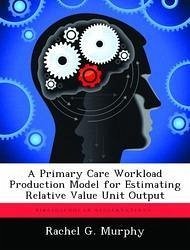Health care costs have grown to unsustainable levels nationally and within the Department of Defense. Military health care costs have historically been difficult to isolate, causing budget cuts to be the vehicle for cost control. Maximum efficiency, therefore, is the goal in order to show improvement. With the Air Force's new preventive health plan, they aim to drive a long-term posture for cost reduction through prevention. This research effort aimed to develop a tool to assist in future efforts to understand and improve efficiency in workload output, and whether a relationship exists between patient workload demand and the per-encounter variables collected at the Wright-Patterson AFB Medical Center Primary Care Clinic. This study examined primary care production data from the Military Health System Management Analysis and Reporting Tool from fiscal years 2009 and 2010, measuring patient workload in Relative Value Units (RVU) per encounter. The model produced shows a predictive adjusted R of 82%, indicating the variable appointment type shows an explanatory capability of the differences in RVU output per encounter and is a demand-based estimating tool for RVU throughput. When applied, the results could lead to a better understanding of efficiency of workload production.
Hinweis: Dieser Artikel kann nur an eine deutsche Lieferadresse ausgeliefert werden.
Hinweis: Dieser Artikel kann nur an eine deutsche Lieferadresse ausgeliefert werden.








